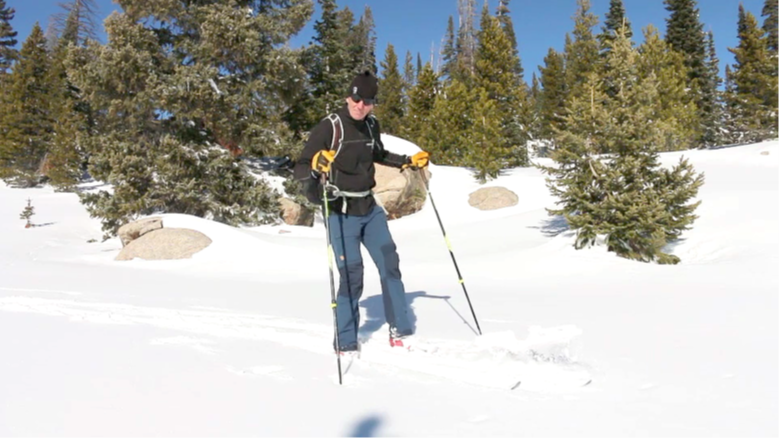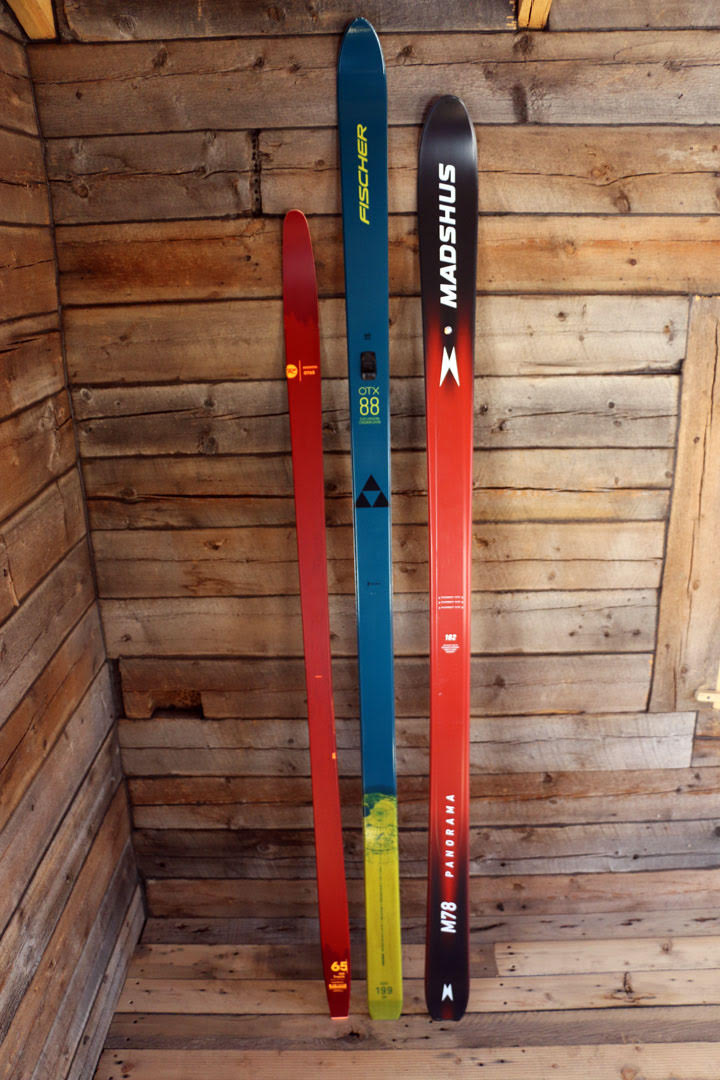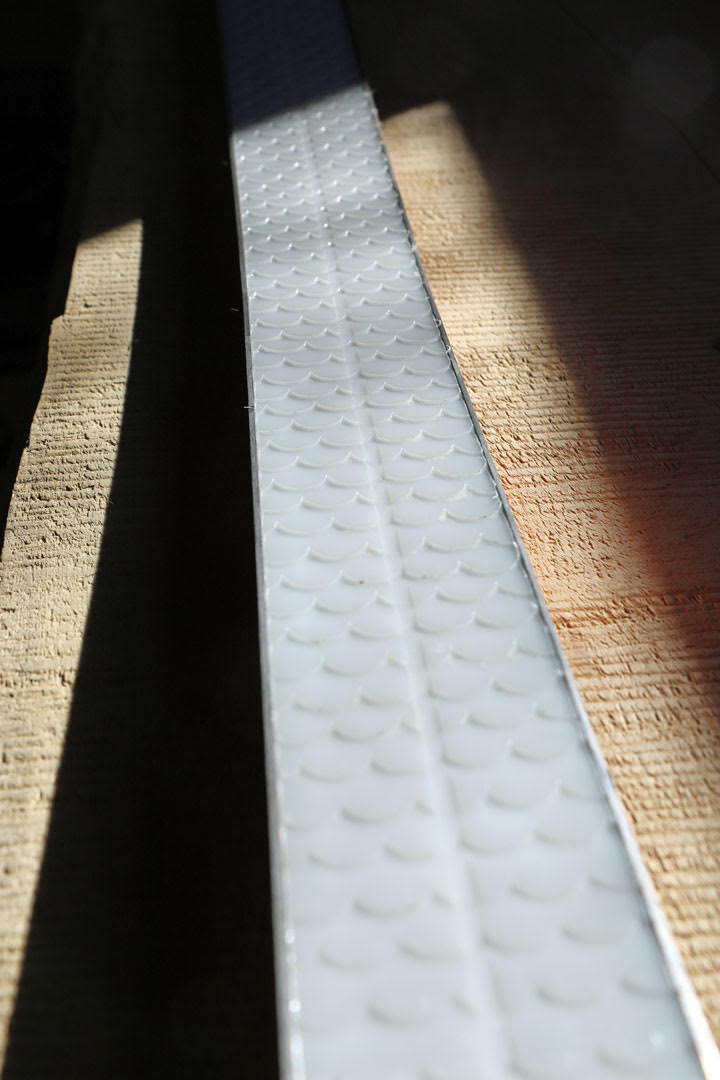|
editor's note: this story is pulled out in its entirety from the February/March edition of HIKE ROCKY digital magazine. For more information about the magazine visit this page story, photos, and video by Murray Selleck, HIKE ROCKY’S equipment specialist It may be the cadence of cross country skiing that I love so much. The rhythmic kick and glide of cross country skiing is addicting, whether gliding through an open meadow or working hard breaking a deep, snowy trail up a mountainside. Perhaps it is the ability to explore the winter backcountry under my own power on skis that makes each time I go feel like a new adventure. It makes no difference whether it's a bluebird day with sunshine creating shimmering rainbows off the snowpack or I’m under heavy snow-laden clouds, smothering the mountaintops with temperature-dropping winds whipping through the trees... being out on a winter day on cross country skis is always exhilarating and wonderful. Wonderful that is, if the skis you have chosen match up to your expectations. There are a few basic concepts while choosing a cross country (xc) ski for yourself that you should be aware of; these will make your xc ski decision easier. With the right ski you will want to go time and time again. If your ski isn't at its optimum, your ski day may be challenging and reduce your enjoyment. Here's what to think about to make each xc ski day wonderful! How to choose ski length The length of your cross country ski is primarily based on your weight. XC skis have no clue how tall we are but they sure do know how much we weigh. The ski needs to be soft enough for you to effectively set the “fish scale” pattern into the snow to stabilize your kick. And the ski also has to be stout enough to carry your body weight for glide. Too much one way or the other and you're either slipping because the ski is too stiff or you're not gliding at all because it is too soft. Every cross country ski manufacturer will publish a weight range for each model and length of ski they produce. These weight ranges are excellent suggestions, but not rules written in stone. Many times, a person will find themselves in the middle of two weight ranges with the option of a shorter or longer ski length. Choosing one ski length over the other depends on your history as a cross country skier, your athleticism, and your enthusiasm for xc skiing. The shorter ski will allow you to set your kick easier and the ski will be easier to maneuver, especially skiing downhill. The one drawback is that a shorter ski may not glide as far with each kick that you set. The longer ski will definitely have more glide but you will have to be more proficient with your xc skills. If you don't transfer your body weight 100% from one ski to the other to set your kick you'll slip. The skis will immediately remind you to pay attention to your technique! Another consideration with a longer ski length is the maneuverability. It may require a bit more energy to bring the skis around in a turn... or not, depending on your skiing ability. Cross country skiers who have been at this for quite some time generally prefer a longer ski. Beginners or folks who are a bit timid on their skis likely will choose the shorter ski length. This last comment is a pretty broad generalization but it does hold some historical consistency. Ski width considerations When you start shopping for a backcountry/cross country ski you will notice a big range of ski widths and profiles. From very skinny skis measuring about 44mm in width underfoot, meant for a groomed track at a touring center, to very wide alpine-looking backcountry skis coming in at over 112mm at the tip there are lots and lots of choices. When considering backcountry xc skis with metal edges, the narrower the ski the more mileage and touring oriented it is. That is to say a backcountry skier with a narrower BC ski will tend to favor milder terrain and coming to a hill they might prefer to ski around it rather than up and down it. As the skis gain width they also gain sidecut, giving the skis more downhill control and turnability. Skiers choosing the widest profile skis probably have a slope in mind to make some turns along their way. Making some turns is a high priority. Of course, there is always a middle ground: skis that are not too narrow and not too wide. The middle width profile of ski adds stability with its width and offers a modicum of downhill control and turnability. This skier is happy to go for a long tour and if they make some long wide sweeping GS turns or two along the way, fine, and if they don't, that's fine too. The trick in choosing a width ski for yourself is imagining yourself on skis in the backcountry. Will you be touring through meadows? Exploring new terrain? Making turns in deep powder? A little bit of all of it? Let those thoughts of you skiing be your guide. Ski width and boot power When considering xc boots to go with your skis, you want to match ski width with boot power. More than likely, a narrower ski will be matched with a “light touring boot.” You won’t be asking as much from the ski while you're on your tour. Kicking and gliding may be the extent of your day. As skis get wider you'll need a ski boot that has increased power to control and direct the ski in more adventurous terrain. These boots often have an external ankle support combined with a stiffer flexing sole. The combination is a go-anywhere-do- anything package. Be aware that there are two NNN boot binding systems. One is a “light touring” NNN system and the other is NNN BC (backcountry). The two systems are not compatible with each other despite having the common NNN reference. A light touring NNN system has a narrower and thinner toe bar that slots into the binding while the NNN BC bar is longer in width and beefier in thickness. “Old school” three pin boots and bindings are still an excellent choice for your backcountry set up especially when you are looking to increase your downhill turning capability. Scale patterns for kick One of your last considerations in choosing a ski is the kick pattern or “no wax” pattern on the base of the ski. Fischer Nordic names their pattern “Offtrack Crown.” Rossignol offers “Positrack” and Madshus gives us “Omnitrack.” Other manufacturers offer their versions of a traditional fish scale pattern. While they all work as advertised and offer similar features (a deeper and tighter pattern under foot and the pattern lengthens and becomes more shallow towards the tip and tail), they can ski a little differently from one another. The easiest way to judge what the pattern will do for you is to feel the pattern. Brush your fingertips against the grain of the scaled pattern, especially through the middle of the pattern where your boot will be centered on top of the ski. You can feel the depth of the pattern and each one is cut either a bit deeper or shallower from one another. A deeper pattern under foot will offer a very positive kick whether or not you properly transfer your body weight. You can be distracted by the clouds or bird song and still ski along, setting your kick pretty reliably. The drawback with a deeper cut pattern is it does increase the inherent drag on glide all no wax patterns create. The ski will not glide as far with the effort of your kick. A ski with a shallower no wax pattern under foot will reliably kick with proper weight transfer and the pattern does enhance the glide effect by reducing drag. Choose the pattern that best fits your current skill level or think ahead to the skier you want to become. By the way, “no wax” patterns on your skis do require wax! At a minimum use a liquid surface wax; this is easily applied over the length of your ski right through the pattern. This will help your ski glide and prevent any icing that can occur on the scales in certain snow conditions. The joys of XC skiing The subtle sound of your skis swish-swishing over snow as you tour. Gliding forward, effortlessly. Exploring a silent winter day. Covering considerable distance under your own power. Laughter with friends. These are the joys of cross country skiing. Skiing on a brisk winter day and enjoying the wonderful scenery and mountainous terrain of RMNP should never be taken for granted and experienced as often as possible. Grab your cross country skis, plan to meet some friends, and get out and ski ... often!  Murray Selleck moved to Colorado in 1978. In the early 80’s he split his time working winters in a ski shop in Steamboat Springs and his summers guiding on the Arkansas River. His career in the specialty outdoor industry has continued for over 30 years. Needless to say, he has witnessed decades of change in outdoor equipment and clothing. Steamboat Springs continues to be home
0 Comments
Leave a Reply. |
Categories
All
|
© Copyright 2025 Barefoot Publications, All Rights Reserved



